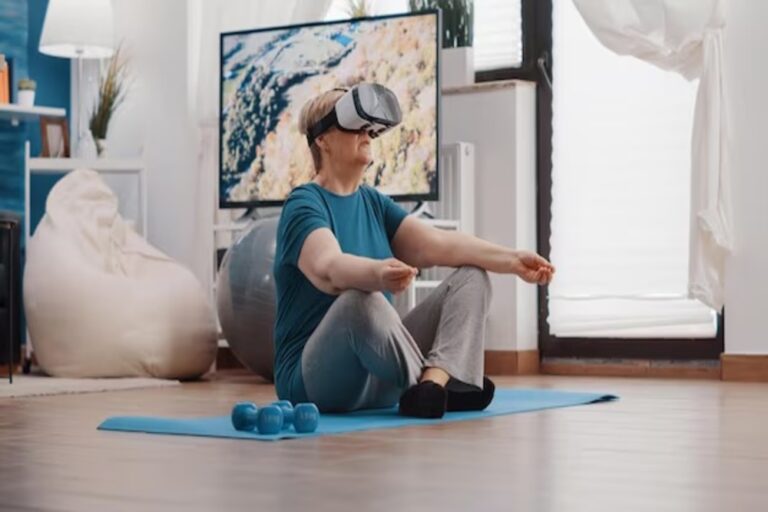
Do you ever feel a phantom buzz in your pocket, a compulsive need to refresh your feed, or a wave of anxiety after scrolling through social media? You are not experiencing this in a vacuum. The seamless interfaces and endless streams of content from the world’s largest tech companies are profoundly reshaping our mental landscapes. Recent studies from 2024 and 2025 continue to highlight the significant Impact of technology on mental health, especially among younger generations.
Research increasingly shows a strong correlation between high social media usage and increased rates of anxiety, depression, and loneliness.
This article delves into the critical issue of tech giants’ impact on mental health, exploring the latest scientific studies and expert opinions that reveal a complex and often troubling picture.
We are living through a massive, uncontrolled experiment on a global scale. The architects of our digital world—the very platforms designed to connect us—are now at the center of a growing mental health crisis. We’ll move beyond the surface-level debates to uncover the psychological mechanisms at play, from the algorithmic amplification of anxiety to the erosion of deep focus.
We will examine the hard evidence linking platform design to mental distress, hear from experts who are sounding the alarm, and critically assess whether the industry’s “solutions” are genuine efforts or mere public relations maneuvers. Prepare for a deep dive into one of the most pressing issues of our time.

The Algorithmic Architect of Our Anxiety
At the heart of the debate over tech giants’ impact on mental health lies the algorithm. These complex systems, designed with the primary goal of maximizing engagement, are the invisible puppet masters of our digital lives. They are not neutral purveyors of information; they are powerful engines of influence, shaping what you see, how you feel, and even what you believe.
Think of the algorithm as a tireless DJ, constantly spinning tracks to keep you on the dance floor. The problem is, this DJ often plays the most emotionally charged, polarizing, and ultimately distressing music because that’s what keeps you glued to the screen.
Recent studies have begun to draw a direct line between algorithmic curation and negative mental health outcomes. A 2024 study from the University of Amsterdam found that platforms prioritizing “engagement” often amplify content that triggers outrage and social comparison—two well-known contributors to anxiety and depression.
When your feed is a curated highlight reel of others’ successes and a constant stream of inflammatory news, your brain’s threat-detection system is perpetually activated. This state of chronic, low-grade stress can have devastating long-term effects on your well-being.
The psychological mechanism at play is often a “variable ratio reinforcement schedule,” a concept borrowed from B.F. Skinner’s research on addiction. The unpredictable nature of rewards—the likes, shares, and comments—keeps you coming back for more, creating a compulsive loop that is difficult to break. It’s the same principle that makes slot machines so addictive.
Each scroll is a pull of the lever, with the potential for a small hit of social validation. As Dr. Anna Lembke, a leading expert on addiction at Stanford University, puts it, “We’ve all got a smartphone-sized slot machine in our pockets, and it’s turning us into dopamine addicts.” This isn’t a failure of your willpower; it’s a feature of the system.
The Youth Mental Health Crisis: A Smoking Gun?
Nowhere is the tech giants’ impact on mental health more starkly evident than among adolescents and young adults. The U.S. Surgeon General, Dr. Vivek Murthy, issued a landmark advisory in 2023, warning that we cannot conclude social media is sufficiently safe for our youth. This was a monumental statement, akin to the warnings issued about tobacco in the 20th century.
The advisory highlighted that adolescents who spend more than three hours a day on social media face double the risk of experiencing symptoms of depression and anxiety. Considering recent surveys show teens average 3.5 hours daily on these platforms, the scale of the problem becomes terrifyingly clear.
The developing adolescent brain is uniquely vulnerable to the pressures of social media. This is a period of intense identity formation and heightened sensitivity to social feedback.
Platforms that emphasize appearance, popularity, and social comparison can be particularly damaging. When asked about the impact on their body image, 46% of adolescents reported that social media makes them feel worse.

Key Psychological Pressures on Youth:
- The Comparison Culture: Social media creates an environment of perpetual comparison, where curated, filtered, and often unrealistic depictions of life become the benchmark for success and happiness. This can lead to feelings of inadequacy, envy, and low self-esteem.
- Fear of Missing Out (FOMO): The constant stream of updates creates a powerful sense of FOMO, an anxiety that you are being left out of rewarding experiences that others are having. This can drive compulsive checking and a feeling of being constantly “on.”
- The Performance Principle: Many young users feel pressure to perform for an online audience, carefully curating their own lives to project an image of success and happiness. This can be an exhausting and inauthentic way to live, disconnecting them from their true selves.
- Cyberbullying and Online Harassment: The anonymity and distance of online interactions can foster a level of cruelty that is less common in face-to-face interactions. The relentless nature of cyberbullying can have severe and lasting psychological effects.
Analyzing the Tech Giants’ Impact on Mental Health: Are They Doing Enough?
In response to growing public pressure and the threat of regulation, tech giants have rolled out a suite of “digital wellbeing” features. These include screen time dashboards, app usage timers, and customizable “focus modes.”
On the surface, these seem like positive steps. They provide users with data about their habits and tools to set boundaries. However, many experts are deeply skeptical, arguing that these features are little more than a smokescreen.
The core criticism is that these tools place the entire burden of responsibility on the individual user, while leaving the fundamentally addictive architecture of the platforms unchanged. It’s like a casino handing out pamphlets on responsible gambling while continuing to operate 24/7 with all the same psychological tricks.
A critical 2025 analysis published in Frontiers in Psychiatry argued that these digital wellness interventions often “risk becoming inadequate substitutes” for real clinical care and may even foster a “false sense of security.”
They address the symptoms—excessive screen time—without tackling the root cause: a business model built on the harvesting of human attention.
Some of the most popular “wellness” apps use the very same engagement-driven strategies found in social media, such as streak-based incentives and push notifications, blurring the line between promoting well-being and fostering digital dependency.
The fundamental conflict of interest remains: can a company whose profits depend on you scrolling more, truly help you scroll less? Until the core business model changes, these features will likely remain a peripheral and largely ineffective solution to a systemic problem.
The Double-Edged Sword: When Technology Helps
It would be disingenuous to paint the tech giants’ impact on mental health with a single, dark brush. The same technologies that can cause harm also hold immense potential for good. For many, technology has become a vital lifeline, breaking down long-standing barriers to mental healthcare and fostering a sense of community.
The most significant positive impact is the democratization of access to mental health resources. Apps like Calm and Headspace have introduced millions to the benefits of meditation and mindfulness.
Online therapy platforms such as Talkspace and BetterHelp have made it possible for people in remote areas or with mobility issues to connect with licensed therapists.
This has been particularly crucial in a world where the stigma surrounding mental health is slowly eroding, but access to traditional care remains a significant challenge.
Positive Impacts of Technology on Mental Health:
- Increased Accessibility: Online therapy, mental health apps, and digital support groups make care more accessible and affordable for a wider range of people.
- De-stigmatization: The open conversations about mental health happening on social media platforms, while sometimes problematic, have also played a crucial role in normalizing these struggles and encouraging people to seek help.
- Community and Connection: For individuals with niche interests or those who feel isolated in their offline lives, online communities can provide a powerful sense of belonging and social support.
- Data for Research: The vast amounts of data generated by our digital interactions are being used by researchers to better understand the patterns of mental illness and develop more effective interventions.
This duality is the central paradox of our time. The key is to harness the immense power of technology to support our well-being while mitigating its potential for harm. This requires a more discerning approach from us as users and a greater sense of responsibility from the companies that build these powerful tools.
A Practical Framework for Digital Resilience
While we advocate for systemic change, we are not powerless. We can take concrete steps to mitigate the negative effects of technology on our mental health. This isn’t about a punitive “digital detox,” but about cultivating a healthier, more intentional relationship with our devices.
The 4-Step “Mindful Tech” Framework:
- Curate Your Consumption:
- Actively unfollow accounts that make you feel inadequate, anxious, or angry. Your feed is your digital home; decorate it with content that inspires, educates, and uplifts you.
- Use features like “mute” and “unfollow” liberally. You are not obligated to listen to everyone.
- Seek out long-form content like articles, podcasts, and documentaries that encourage deep thinking over reactive scrolling.
- Create Intentional Friction:
- Turn off all non-essential notifications. Every buzz and bing is an interruption that hijacks your attention.
- Move your most distracting apps off your home screen and into folders. This small bit of friction can break the cycle of mindless checking.
- Use grayscale mode on your phone. Stripping away the vibrant colors makes the screen significantly less appealing.
- Schedule Your Solitude:
- Designate specific times of the day as “no-phone zones,” such as the first hour after you wake up and the last hour before you go to sleep.
- Schedule regular “tech-free” activities in your week, such as a walk in nature, a hobby, or a conversation with a friend.
- Practice being alone with your thoughts without immediately reaching for your phone as a distraction.
- Connect with a Conscience:
- Prioritize face-to-face interactions. No amount of online “connection” can replace the richness of real-world relationships.
- When you are with people, put your phone away. Give them the gift of your full, undivided attention.
- Use technology as a tool to facilitate real-world connections, not as a substitute for them.
By implementing these strategies, you can begin to reclaim your attention and build a digital life that aligns with your values and supports your mental well-being.
Frequently Asked Questions
What does the latest research say about the tech giants’ impact on mental health?
Recent studies and reports, including a significant advisory from the U.S. Surgeon General, indicate a strong correlation between high levels of social media use and increased risks of anxiety, depression, and other mental health problems, especially among young people.
The research points to factors like algorithmic amplification of negative content, social comparison, and the addictive design of platforms as key contributors to these negative outcomes.
How does the design of social media platforms specifically contribute to the tech giants’ impact on mental health?
The design often incorporates psychological principles to maximize user engagement. Features like infinite scroll, variable reward schedules (likes, notifications), and algorithms that prioritize emotionally charged content can create compulsive usage patterns.
This design can lead to what is known as “attentional capture,” where the platform hijacks a user’s focus, and can foster social comparison and anxiety by presenting curated, unrealistic versions of reality.
Are there any positive aspects to the tech giants’ impact on mental health?
Yes, there is a significant positive side. Technology has greatly improved access to mental health resources through online therapy platforms, meditation apps, and digital support groups.
It has also played a role in de-stigmatizing mental illness by providing a space for open conversation and helping people with shared experiences find a sense of community and belonging.





